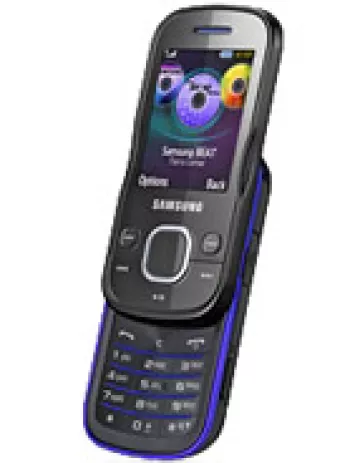
Overview
The Samsung P310, launched in September 2006, was an innovative feature phone at the time, offering a blend of style and functionality packed into a remarkably slim body. Although it has been discontinued, the P310 remains a noteworthy device when reflecting on the evolution of mobile technology. It catered to users seeking a compact yet capable phone, with features that were considered advanced at the time.
Design and Build
The Samsung P310 featured a distinctive design with dimensions of 86 x 54 x 8.9 mm and a weight of just 85 grams. Its ultra-slim profile and lightweight construction made it incredibly portable, easily fitting into pockets or small handbags. The phone employed high-quality materials, resulting in both an aesthetic appeal and a robust structure. The use of a mini-SIM card slot aligned with the standards of the era, enabling users to effortlessly connect to GSM networks.
Display
Equipped with a 1.9-inch TFT display capable of rendering 256K colors, the P310 delighted users with vibrant visuals. The screen had a resolution of 320 x 240 pixels, offering a pixel density of approximately 211 ppi, which was quite impressive for a feature phone at the time. This vibrant display was suitable for viewing photos, navigating menus, and playing games, enhancing the overall user experience.
Camera
The main camera of the Samsung P310 was a single 2 MP sensor, complemented by an LED flash. While basic by today's standards, it allowed users to capture spontaneous moments with reasonable clarity. The camera was also capable of recording CIF quality videos, providing a means to document brief video clips. Although lacking a front camera, the P310’s primary camera was considered adequate for non-professional use during its time.
Battery Life
Powering the Samsung P310 was a removable Li-Po 550 mAh battery. The battery life was quite satisfactory, offering up to 300 hours of standby time and up to 6 hours of talk time. This ensured that users could depend on the device for prolonged periods without frequent recharges. The removable nature of the battery was a practical feature, allowing users to replace the battery easily in case of wear or failure.
Storage and Memory
The P310 came with 80MB of internal storage, which was expandable via a dedicated microSD card slot. This allowed users to store additional photos, music files, and applications. While the internal memory was modest, the option of expanding storage provided a degree of flexibility and was a welcome feature for users with greater storage needs.
Network and Connectivity
Operating on GSM 900 / 1800 / 1900 networks, the Samsung P310 ensured reliable connectivity for users. It supported technologies like GPRS (Class 10) and EDGE, which facilitated basic web browsing and data transfer. Although it did not feature WLAN or positioning capabilities, the inclusion of Bluetooth 1.2 with A2DP and a proprietary USB connection offered essential connectivity options for transferring files and communicating with other devices.
Audio and Multimedia
For audio, the P310 had a built-in loudspeaker and supported various alert types, including vibration and downloadable polyphonic/MP3 ringtones. However, it lacked a 3.5mm audio jack, which was a common feature on many phones at the time. The absence of a standard audio port meant users had to rely on alternative methods for listening to music, such as Bluetooth headphones or proprietary adapters.
Software and Features
As a feature phone, the Samsung P310 operated on a proprietary operating system tailored to the device's specifications. It supported basic messaging services including SMS, EMS, MMS, and Email, catering to the communication needs of the time. The phone also featured a WAP 2.0/xHTML browser, allowing users to access the internet in a limited capacity. Additionally, the inclusion of Java MIDP 2.0 allowed users to download and enjoy a variety of Java-based applications and games.
Conclusion
The Samsung P310 marked a notable chapter in mobile phone history as a device that blended compact design with functional features. It was aimed at users who prioritized style without compromising on essential mobile capabilities. While the phone has been discontinued and surpassed by subsequent innovations, its legacy lives on as a testament to Samsung's commitment to design and functionality in the feature phone era.
Key Features of Samsung P310
- Compact design with dimensions of 86 x 54 x 8.9 mm and lightweight at 85 g.
- GSM technology supporting multiple 2G bands (GSM 900/1800/1900).
- 2 MP main camera with LED flash for basic photography.
- TFT display with 256K colors for vibrant visuals.
- Bluetooth 1.2 with A2DP for wireless audio streaming.
- Expandable memory via microSD card slot.
- Removable Li-Po 550 mAh battery offering up to 300 hours of standby.
- Support for SMS, EMS, MMS, and Email for versatile messaging options.
- MP3 ringtones and downloadable polyphonic sounds for customizable alerts.
- Java support for downloadable games and applications.
Disadvantages of Samsung P310
- Discontinued model, no longer available for purchase or support.
- Lacks modern connectivity options: no WLAN, GPS, or radio.
- Low-resolution display with only 256K colors and small screen size (1.9 inches).
- Limited internal storage of 80MB only, although expandable via microSD.
- Basic 2 MP main camera, no selfie camera available.
- No 3.5mm headphone jack available.
- Utilizes a proprietary USB connection instead of a standard type.
- Low battery capacity of only 550 mAh, which might not suffice for extensive use.
- GPRS and EDGE connectivity only, missing 3G/4G capabilities for faster internet speeds.

View Also
More Phones
All Rights Reserved +14266 Phones © Mobilawy 2025

























